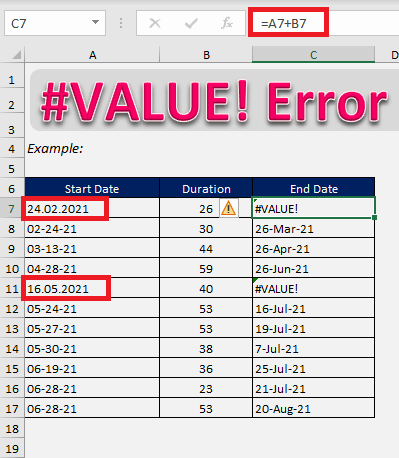Ever wanted to get something in the middle of your text? And you’re doing it by hand? Fret not, it is very easy to do in Excel with the MID Formula. It allows you to get any number of characters in the middle of your text.
Key Takeaways:
- Extracting Specific Text: The MID formula allows you to extract a specific portion of text from a cell. With the syntax =MID(text, start_num, num_chars), it enables you to pull out characters starting from any position within a cell, perfect for isolating parts of long text strings.
- Flexible Use in Data Parsing: MID is particularly useful when combined with other text functions like SEARCH or LEN to dynamically extract text based on variable positions. This makes it ideal for cleaning or reorganizing data without needing complex manual adjustments.
- Helpful for Large Datasets: Using MID in larger datasets simplifies data processing, especially when you need to consistently extract information such as specific codes, identifiers, or substrings across multiple cells.
What does it do?
Extracts a specific number of characters from the middle of a text
Formula breakdown:
=MID(text, start_num, num_chars)
What it means:
=MID(source text, starting position to extract text, number of characters to extract)
Table of Contents
How to Use MID Formula
I explain how you can do this below:
STEP 1: We need to enter the MID function in a blank cell:
=MID(
STEP 2: The MID arguments:
text
What is the source text?
Select the cell containing the source text that you want to extract from:
=MID(C9,
start_num
Where will we start extracting text?
Select the cell containing our starting position. This is where the MID formula will start getting text:
=MID(C9, D9,
num_chars
How many characters do you want to get?
Select the cell containing the number of characters. In our case, we want to get 3 characters:
=MID(C9, D9, E9)
Apply the same formula to the rest of the cells by dragging the lower right corner downwards.
You now have your extracted text! In our scenario, we tried to extract the different words in the phrase “How are you?”
Practical Examples to Enhance Your Skills
Case Study: Extracting Names from Email Addresses
In the bustling world of data analysis, extracting specific text segments from a dataset can feel like finding a needle in a haystack. Thankfully, Excel’s MID function proves to be a reliable magnet in this metaphorical search. To truly appreciate its prowess, let’s delve into a common scenario: pulling names from email addresses.
Picture this: You have a spreadsheet filled with email addresses, and your task is to separate the names before the ‘@’ symbol. Without breaking a sweat, the MID function pairs up with the FIND function to pinpoint the exact location of the “@” symbol. Your formula looks something like =MID(B5,1,FIND("@",B5)-1), and as you populate this down your list of emails, the MID function obediently fetches each name.
With each step of the formula, the FIND function scouts out the ‘@’ symbol, MID swoops in at the first character, and then, voila! You have a clean list of names, stripped from their digital domain shackles. This reliably executed operation saves not only time but also preserves the sanity of anyone who’s ever tackled such a task manually.
Interactive Exercise: Isolating Dates from Serial Numbers
Ever notice those long serial numbers that carry hidden meanings within them? Dates tucked away in a string of digits can carry important information, and with Excel’s MID function, you can mine out this precious data effortlessly. Let’s dive into an interactive exercise.
Imagine you’ve got a list of product serial numbers and embedded within each 14-character serial is a year and month in the form YYYYMM. Let’s get our hands digital by implementing the following formula: =MID(B5,5,6). This handy line of text extraction code will isolate “202105” for example, indicating May 2021.
The beauty of these exercises is not just in the extraction but in flexing the power of MID to adapt to different scenarios. You’ll find that being nimble with your formulas is key to becoming an Excel wizard, unlocking the full potential of data before you.
Troubleshooting Common Issues with MID in Excel
Solving MID Errors: Ensuring Correct Results
Sometimes diving into Excel’s MID function can lead you to a few errors before snagging that data jewel you’re after. If you hit a wall with the dreaded #VALUE! error, don’t fret! It could mean that the starting point you’ve set doesn’t exist in the text string, or perhaps it’s less than 1. Always double-check your start number to ensure it fits snugly within the cell’s text length.
Another trap is the lure of a blank cell. If MID is trying to play its magic on nothingness, it’ll simply shake its head with an error. Before you summon the formula, make sure your cells have the text strings you’re trying to dissect.
Avoid these common pitfalls by verifying your data range and keeping close tabs on those start numbers. Fundamentally, confirming that your source cells are not empty and your formula points are valid will set your MID command up for success, allowing you to sail smoothly towards your data destination.
Why Your MID Formula Might Not Return a Number and How to Fix It
That moment when you want numbers and your MID formula coyly returns text can be quite the puzzle. You see, MID is known to present its findings as text, even if you’re extracting pure digits. So if you’re scratching your head watching numbers lean left in the cell (a sure sign they’re text), here’s the fix you need: wrap your MID with the VALUE function.
For example, say you’ve extracted what should be zip codes from a string of text addresses using =MID(A2, start_num, num_chars), and they’re stubbornly text-styled. To convert these to numbers, just cloak the formula in VALUE like this: =VALUE(MID(A2, start_num, num_chars)). Now, the numbers align to the right, donning their numeric format with pride, ready for any mathematical quest you propose.
If numbers still elude your grasp, ponder this – have you stumbled upon the infamous extra space or text formatting issues? Fret not; wrap your MID function in a trusty TRIM formula to shave off those sneaky invisible spaces: =VALUE(TRIM(MID(A2, start_num, num_chars))). By following these simple spells, you’ll coax MID into yielding numbers you can count on.
Frequently Asked Questions:
How do I use the MID formula to extract text from the middle of a cell?
The MID function syntax is =MID(text, start_num, num_chars). For example, to extract three characters starting from the 5th character in cell A1, use =MID(A1, 5, 3). This will return three characters from the middle of the cell’s text, starting at the fifth position.
Can I use MID with dynamic positions for more flexibility?
Yes, you can. To dynamically set the starting position, combine MID with SEARCH. For example, if you want to start after a dash (-) in cell A1, use =MID(A1, SEARCH(“-“, A1) + 1, 5). This finds the dash, starts extraction immediately after it, and returns the next five characters.
What’s the difference between MID, LEFT, and RIGHT in Excel?
MID extracts characters from any position within text. LEFT extracts from the beginning, and RIGHT from the end. For example, =LEFT(A1, 3) returns the first three characters, =RIGHT(A1, 3) returns the last three, and =MID(A1, 3, 3) pulls three characters starting from the third position.

Bryan
Bryan Hong is an IT Software Developer for more than 10 years and has the following certifications: Microsoft Certified Professional Developer (MCPD): Web Developer, Microsoft Certified Technology Specialist (MCTS): Windows Applications, Microsoft Certified Systems Engineer (MCSE) and Microsoft Certified Systems Administrator (MCSA).
He is also an Amazon #1 bestselling author of 4 Microsoft Excel books and a teacher of Microsoft Excel & Office at the MyExecelOnline Academy Online Course.













